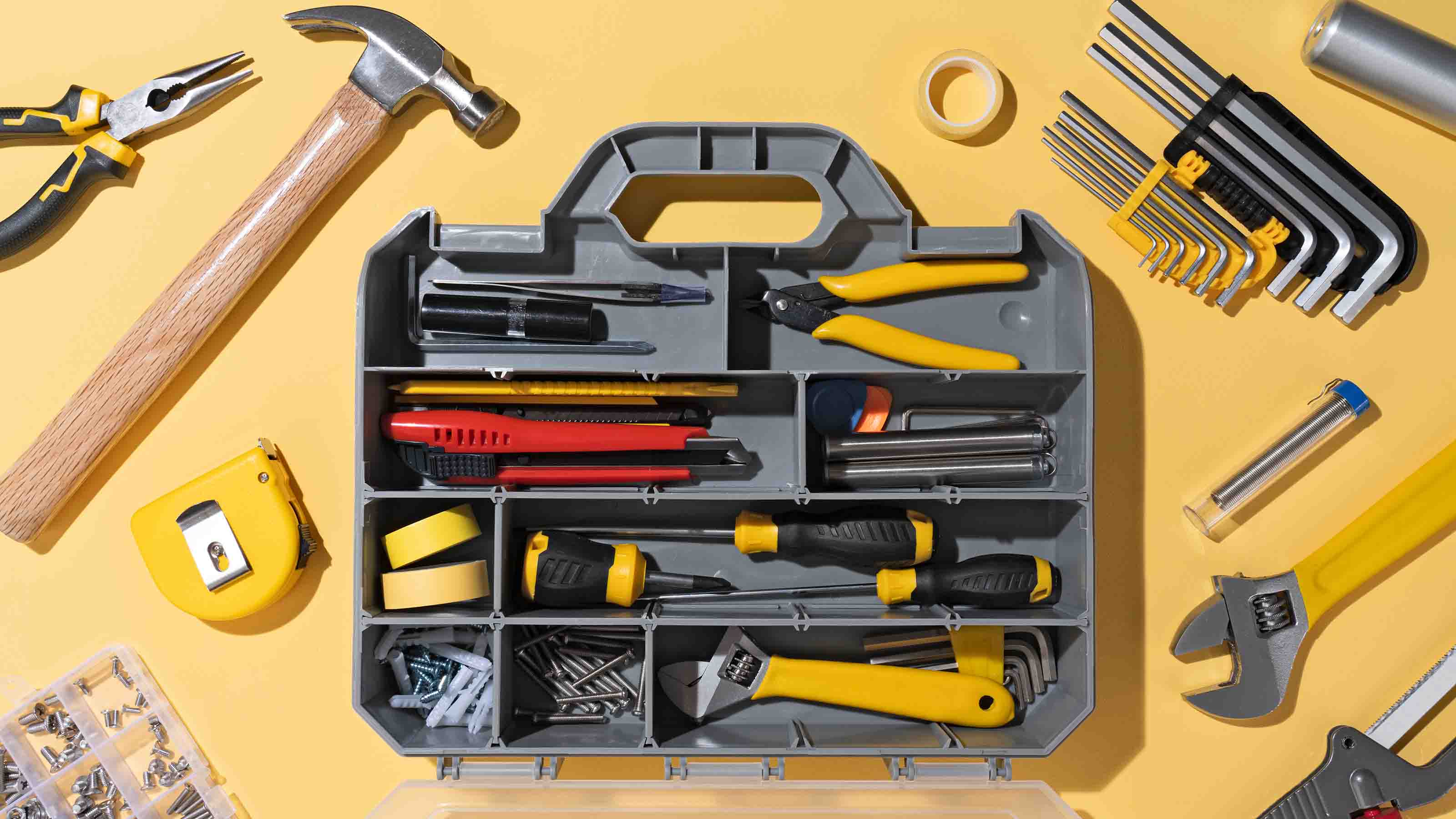Fill the Holes in Your Homeowners Insurance
Gaps in your coverage could cost big money if disaster strikes.


Editor's note: This story has been updated since it originally was published in 2003.
Think damage from a water or sewer line break on your property is covered by your homeowners insurance? How about damage from earthquakes, mold or termites? Think again.
Most homeowners mistakenly think that their homeowners insurance covers more losses than it really does, according to a recent study by the National Association of Insurance Commissioners. In fact, despite all the publicity about Hurricane Katrina victims whose damage claims were denied because they lacked flood insurance, a third of those surveyed by NAIC thought their standard homeowners policies would cover flood damage.
From just $107.88 $24.99 for Kiplinger Personal Finance
Become a smarter, better informed investor. Subscribe from just $107.88 $24.99, plus get up to 4 Special Issues

Sign up for Kiplinger’s Free Newsletters
Profit and prosper with the best of expert advice on investing, taxes, retirement, personal finance and more - straight to your e-mail.
Profit and prosper with the best of expert advice - straight to your e-mail.
For most homeowners, getting insurance was just another step in the buying process. But if that was the last or only time you reviewed your policy, there may be gaps in your coverage.
Below are some common holes in homeowners insurance that could cost big money if disaster strikes, and some inexpensive ways to fill them:
When disaster stikes
Although standard homeowners insurance will protect you if a major storm hits, earthquakes and floods typically aren't covered. You usually can add earthquake coverage to your homeowner's policy for about $100, or less if you're in a low-risk area. Flood insurance is only provided by the National Flood Insurance Program, but you can buy it through most insurance agents. Costs can range from $300 in a low-risk area to more than $800 if you live in a flood plain, says Don Beery, an independent insurance agent in New Orleans. Check for a quote.
Water, water everywhere
You'd think your insurer would pay to clean up the mess created by a sewage or water backup, but most policies don't provide this protection. For $60 a year, you can buy up to $5,000 in added coverage for water and sewage backup, Beery says.
Unrealistic rebuilding costs
Check the local cost of building a home like yours. The insurance company is concerned with replacement value, not the market value of your home. If your home is insured for less than what it would cost to rebuild, you'll foot the bill for the difference (see "Is Your Home Underinsured"). Some companies will pay up to 125% of the value listed in your policy, but most have dropped guaranteed replacement coverage, which pays whatever it costs to rebuild your home. And as some Katrina victims discovered, they didn't have enough money to rebuild despite full payouts from their insurers (see Insurance Lessons After Katrina.
Contractors in your area should be able to provide you with some ballpark cost-per-square-foot estimates. But this generic calculation won't be of much use if have custom features such as marble mantels, hand-carved banisters and stained-glass windows that are more expensive to replace. For a more precise number, bring in an appraiser or check AccuCoverage.com, which can calculate how much it would cost to rebuild your house. There's a reasonable fee of $7.95, and it takes about ten minutes to fill out an online questionnaire about your home's age, size and other features.
Shortchanging your valuables
Homeowners often find that their policies regularly shortchange valuable items such as collectibles, jewelry and antiques comes up short, says Madelyn Flannagan, vice president for education and research at the Independent Insurance Agents of America.
Take inventory of your belongings. Make a list, starting with recent purchases and big ticket items such as jewelry, art work and collectibles. Photograph or videotape items in your home, then store the pictures, tape and inventory list in a safe deposit box off site. The inventory will help you estimate the value of your items, and serve as a useful record if you ever need to file a claim.
Most policies limit the amount the insurer will pay to replace stolen or damaged property to $2,500. And many offer no protection in case of a mysterious disappearance -- for example, your wedding ring falls down the drain. Flannagan suggests paying a little more for extra coverage tied to the value of hard-to-replace items -- sometimes called a rider or floater.
"If you have a highly valuable collection that can't easily be replaced, the cost of the coverage is small compared with the heartache you'll suffer," she says.
You'll need to get the items appraised if you don't have the bill of sale. Jewelry is more expensive than furs or silver to insure. Expect to pay $15 for each $1,000 of appraised value for jewelry; about $5 per $1,000 of value for furs or silver; and $2 to $3 per $1,000 of value for antiques or artwork.
Too little liability coverage
The typical policy provides $300,000 of liability coverage, which will protect you if someone is injured on your property. You can increase your coverage to $500,000 for about $25 more a year. If you are in a high paying profession and might be an easy target for a lawsuit, consider increasing your liability coverage to $1 million with an umbrella policy for your home, vehicle and other property such as a boat. Umbrella policies usually run $150 to $300 a year.
Protecting your business
Homeowner's policies typically cap coverage for business property damaged or destroyed in your home at $2,500. That includes your computer, business machines, tools supplies and inventory. Losses that occur away from home are limited to $250. And there is no liability coverage, so if a delivery person dropping off a business package trips on your porch you're probably not covered.
Flannagan suggests buying a small business policy, which usually costs $250 to $300 a year for $15,000 worth of coverage for contents in your home office and $1 million in liability coverage.
All (other) risks
Most policies outside coastal areas provide all-risks coverage for the dwelling but don't always extend this blanket protection to the contents of your home, Beery says. Instead, possessions usually have named-perils coverage. An all-risks policy covers damage caused by anything except what is specifically named (usually flood and earthquake). A named perils policy covers only damages caused by particular situations. Many insurance companies are hesitant to offer all-risk coverage for contents, Beery says, but you might be able to get an all-risk rider, which typically adds about 20% to your annual premium.
Profit and prosper with the best of Kiplinger's advice on investing, taxes, retirement, personal finance and much more. Delivered daily. Enter your email in the box and click Sign Me Up.

Award-winning journalist, speaker, family finance expert, and author of Mom and Dad, We Need to Talk.
Cameron Huddleston wrote the daily "Kip Tips" column for Kiplinger.com. She joined Kiplinger in 2001 after graduating from American University with an MA in economic journalism.
-
 What to Do If You Plan to Make Catch-Up Contributions in 2026
What to Do If You Plan to Make Catch-Up Contributions in 2026Under new rules, you may lose an up-front deduction but gain tax-free income once you retire.
-
 If You'd Put $1,000 Into Lowe's Stock 20 Years Ago, Here's What You'd Have Today
If You'd Put $1,000 Into Lowe's Stock 20 Years Ago, Here's What You'd Have TodayLowe's stock has delivered disappointing returns recently, but it's been a great holding for truly patient investors.
-
 How to Max Out Your 401(k) in 2026 (New Limits are Higher)
How to Max Out Your 401(k) in 2026 (New Limits are Higher)In 2026, the maximum contribution limits for 401(k) plans have increased, giving you an excellent shot at maximizing your retirement savings.
-
 AI Appliances Aren’t Exciting Buyers…Yet
AI Appliances Aren’t Exciting Buyers…YetThe Kiplinger Letter Artificial intelligence is being embedded into all sorts of appliances. Now sellers need to get customers to care about AI-powered laundry.
-
 Banks Are Sounding the Alarm About Stablecoins
Banks Are Sounding the Alarm About StablecoinsThe Kiplinger Letter The banking industry says stablecoins could have a negative impact on lending.
-
 Big Changes Are Ahead for Higher Ed
Big Changes Are Ahead for Higher EdThe Kiplinger Letter A major reform of higher ed is underway. Colleges are bracing for abrupt change, financial headwinds and uncertainty.
-
 What New Tariffs Mean for Car Shoppers
What New Tariffs Mean for Car ShoppersThe Kiplinger Letter Car deals are growing scarcer. Meanwhile, tax credits for EVs are on the way out, but tax breaks for car loans are coming.
-
 AI’s Rapid Rise Sparks New Cyber Threats
AI’s Rapid Rise Sparks New Cyber ThreatsThe Kiplinger Letter Cybersecurity professionals are racing to ward off AI threats while also using AI tools to shore up defenses.
-
 Blue Collar Workers Add AI to Their Toolboxes
Blue Collar Workers Add AI to Their ToolboxesThe Kiplinger Letter AI can’t fix a leak or install lighting, but more and more tradespeople are adopting artificial intelligence for back-office work and other tasks.
-
 AI Goes To School
AI Goes To SchoolThe Kiplinger Letter Artificial intelligence is rapidly heading to K-12 classrooms nationwide. Expect tech companies to cash in on the fast-emerging trend.
-
 What To Know if You’re in the Market for a New Car This Year
What To Know if You’re in the Market for a New Car This YearThe Kiplinger Letter Buying a new car will get a little easier, but don’t expect many deals.